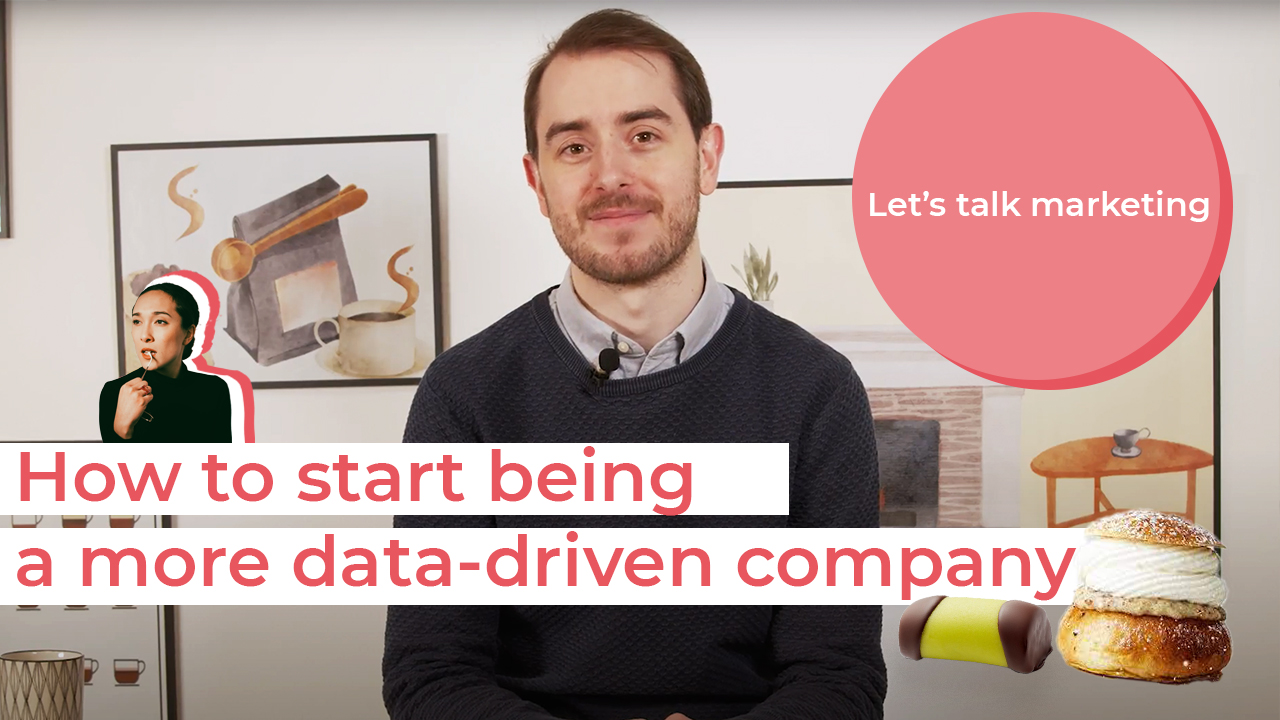
Becoming a data-driven company: How to start your journey
For many businesses, the goal of becoming more data-driven can seem insurmountable.
Even performing due diligence in researching what is required can present you with overwhelming amounts of jargon and concepts. What kind of visualizations are required? Which APIs are you currently employing, and which should you add? Do I need to employ artificial intelligence and neural networks? How do you balance data warehouses against data lakes?
What in the world is a data lake?
Particularly for marketers, the pull to become more data-driven in our approach is getting stronger everyday. Just think about how our budget allocations have changed.
In 2014, digital marketing efforts represented about 38 percent of total ad spend worldwide. In 2023, experts estimate that digital will hit 61 percent of total spend. .png?width=1000&name=FikaFirst_Resourcepage_How%20to%20start%20being%20a%20more%20data%20driven%20company_Brief%20(1).png)
With that shift brings an opportunity to measure more, collect data more effectively, and to gain deeper insights from our efforts.
To help us sort out what all of this means for marketers and discuss how they can get started in being more data-driven, we sat down with Viktor Bovallius, Head of Business Intelligence for Bauer Media. As part of our YouTube series Let’s talk marketing, Viktor dove into some basic and essential tips for organizations attempting to climb the data-driven mountain.
Viktor empathizes with marketers and business intelligence specialists who are starting at ground zero.
“It’s very common that companies are stuck there,” he said, “because they don’t even know how to take the steps into becoming more automated and data-driven. At the same time, they are using part of the data. They are still data-driven, in a sense, but not to the full extent.
“I think it’s very difficult to get started, or more specifically, [to know] where to get started..”
He recommends two preliminary steps to ensure a successful long-term journey: assign a point person to lead the transformation and identify how data can support the needs of the business. Think of it almost as selecting your sherpa and identifying the exact mountain within the broader range that you will climb. In selecting a point person, an organization can then rely on that leader to guide the data-driven transformation.
Once selected, that transformation leader needs to work with the key stakeholders of the business to identify what the goals of this journey are. As we mentioned earlier, there are a whole host of complex topics and solutions that may present themselves along the way. It’s important to analyze each of these solutions against the outcome you’re seeking to achieve.
Additionally, it is important to understand the types of data that your stakeholders are already using. What are their current processes for collecting data and analyzing it? Once you understand those data needs and processes, you can begin to determine what changes and automations could be implemented quickly.
As Viktor points out, it is important to keep an open mind when looking at how your organization consumes data.
“Understand the reason behind why people are doing what they’re doing,” he said. “A lot of times you have a process that [exists], because it’s always been like that. And you're looking at data, because you’ve always looked at the data like that. And you kind of need to question that [assumption] at any given time.”
So, let’s look at what we’ve identified so far. Our leader, the sherpa? Check. The data-driven mountain we will climb? And now, by identifying our current data processes and data collection methods, we have our base camp from which we will climb.
What’s next? We start taking the first few steps toward the data summit.
According to Viktor, the next logical aspect to look at are some visualization platforms. In fact, determining his visualization needs and possible providers was one of the first pathways he explored after setting up his proverbial base camp when joining Bauer Media.
Additionally, once your core data processes are identified, you’ve selected your desired visualizations, and perhaps even created a basic automation process for data collection and transformation, you may want to explore the expertise of specialized consultants. They can be an incredibly powerful resource when looking to take additional steps from a third or halfway up the data-driven mountain.
For instance, once a basic process has been established within your organization, you can begin working with consultants about how you can start to examine APIs and select the best solutions that are fit for your company’s specific needs. As with all phases of climbing the data mountain, start slow but build steadily.
Over time, though, your sophistication level and comfort with building a data-driven organization will only grow.
Then, who knows? Pretty soon you may be exploring the dynamics of accessing data warehouses within your data lake. And then, one day, maybe you can use your data tractor to fertilize and reap quantum insights!
Sorry, we made that last one up. We have to keep you on your toes, though.
Watch Victor’s full interview here. He runs the Funnel fika gauntlet by trying to guess which treat he is eating while blindfolded. He also offers his thoughts on the somewhat controversial fika treat known as “dammsugare,” which actually translates to “vacuum cleaner” in English. You don’t want to miss it!